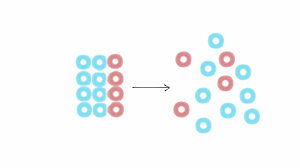Shadows: The Only 2D Entities In The Universe?
- JYP Admin

- Mar 30
- 3 min read
Author: Vaibhav Hutwal
We live in a four-dimensional universe where all matter is three-dimensional. However, does anything truly exist in just two dimensions? This article explores the nature of shadows as potentially the only true 2D entities, distinguishing them from other flat representations such as drawings and reflections. By analyzing the fundamental properties of dimensions and addressing counter arguments, this article delves into the uniqueness of shadows and their implications for our understanding of space and higher-dimensional theories.
In the physical world, everything we interact with has some measurable thickness, no matter how small. A circle drawn on paper is supposedly 2D, yet the ink and atoms stick on top of the paper, giving it depth. No matter how thin something appears, there is always a third dimension lurking beneath. However, when we obstruct a beam of light with an object, something truly fascinating happens! We get perhaps the only 2D entity in existence - something as ordinary as a shadow - an entity with no observable depth. Could shadows be the only truly naturally occurring two-dimensional phenomena in an otherwise three-dimensional reality?
When we move to higher dimensions, we introduce different axes that collectively describe space:
1D (One-Dimensional Space): Exists along a single axis (X-axis), having only length.
2D (Two-Dimensional Space): Defined by two axes (X and Y), having length and height but no depth.
3D (Three-Dimensional Space): Defined by three axes (X, Y, and Z), adding depth to length and height.
For shadows, the Z-axis is completely absent. A shadow stretches across a surface but has no measurable depth. However, are shadows the only 2D entities in the universe? One might argue that shadows are not the only 2D entities, or even shadows do not even exist physically. Let us explore some possible counter-arguments:
Computer Screens are 2D: Digital screens contain pixel that emit radiation at different wavelengths, forming an image on the screen that appears 2D. However, pixels themselves have a depth of their own, no matter how small, making them three-dimensional.
Drawings on paper: The ink sticks on top of the paper giving it a microscopic height, implying that a 2D square drawn on paper is actually a cube without the ceiling.
A shadow is nothing: Although a shadow is not a physical object that can be held or felt by touch, we can precisely measure its length and width (but not its thickness since it does not possess one). In that sense, we can think of shadows as "entities."
Reflections are 2D: Reflections are not truly 2D. When we look at a reflection, we do not just see a flat image - we see the reflected object at different angles. This happens because the object itself has depth, and the way light interacts with it might create a light gradient and tiny shadows that reinforce its three-dimensional nature. The reflection captures these details, preserving the sense of volume and depth. In contrast, a shadow remains purely two-dimensional regardless of how the object is moved or rotated. It may stretch, shrink, or distort depending on the light source, but it never conveys depth. A shadow is simply a projection of an object's outline onto a surface, lacking any internal shading or perspective cues that would indicate a third dimension.
Now that we have concluded that shadows are potentially the only 2D entities in the universe, what does that mean for our understanding of physics and the universe? One of the most intriguing ideas in physics is the holographic principle which suggests that the universe itself might be a 3D projection of 2D information stored in space. If shadows are the only naturally occurring 2D entities, studying them could potentially help us better understand how higher dimensions influence lower ones. This perspective invites further exploration. Could there be ways to test whether our universe operates similar to a projection? And if shadows are purely 2D, does that mean true lower-dimensional existence is only possible as an imprint of something greater? Do dimensions only interact through projections? Could our universe and the 3D objects we interact with be a projection of an even more complex, higher-dimensional reality? The study of shadows might be far more profound than it first appears, offering a new lens through which to view the structure of reality itself.
References
deGrasse Tyson, Neil. Astrophysics for People in a Hurry. W.W. Norton & Company, 2017. Accessed December 13, 2024.
Dimensionality and Shadows. Physics Stack Exchange. Accessed February 2025. https://physics.stackexchange.com.

.png)




Comments